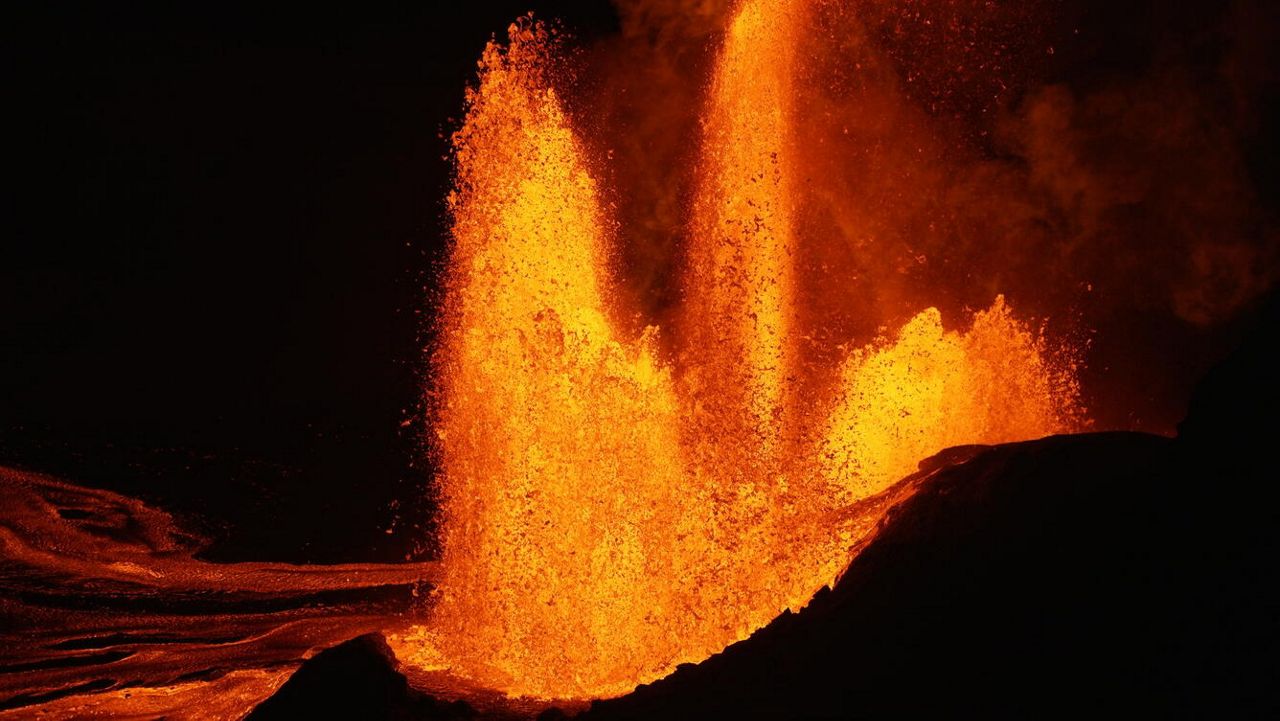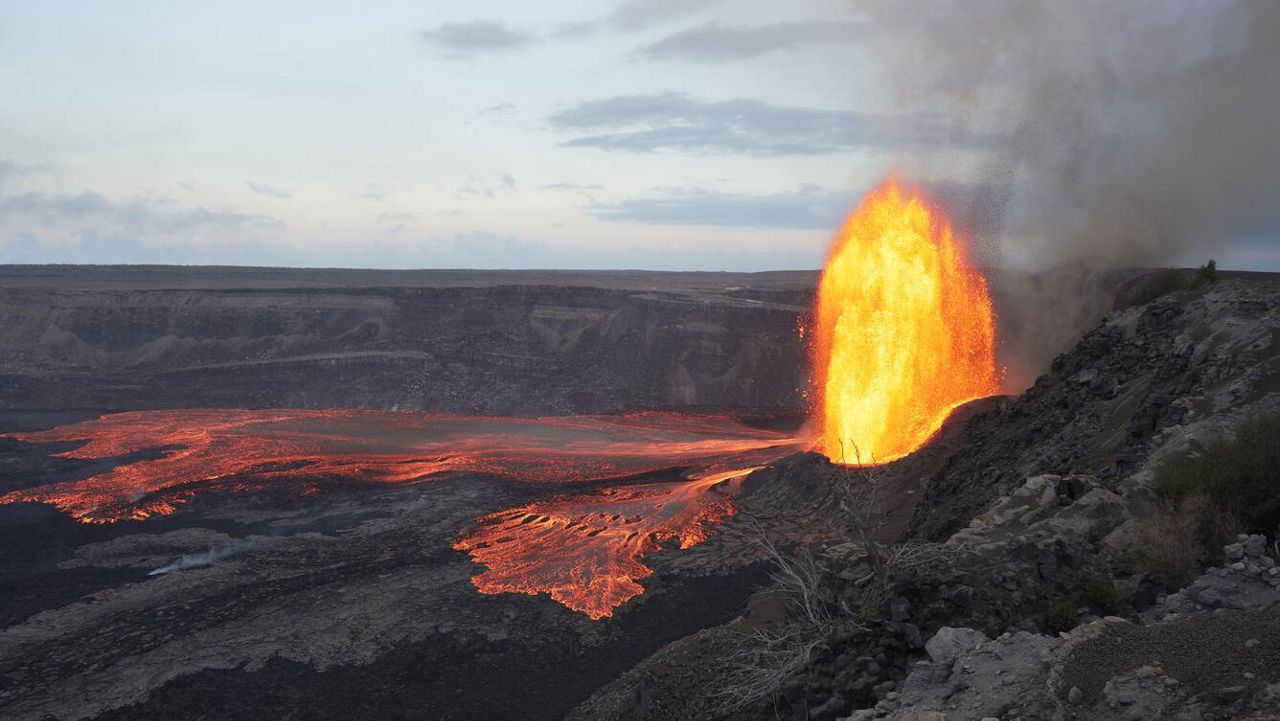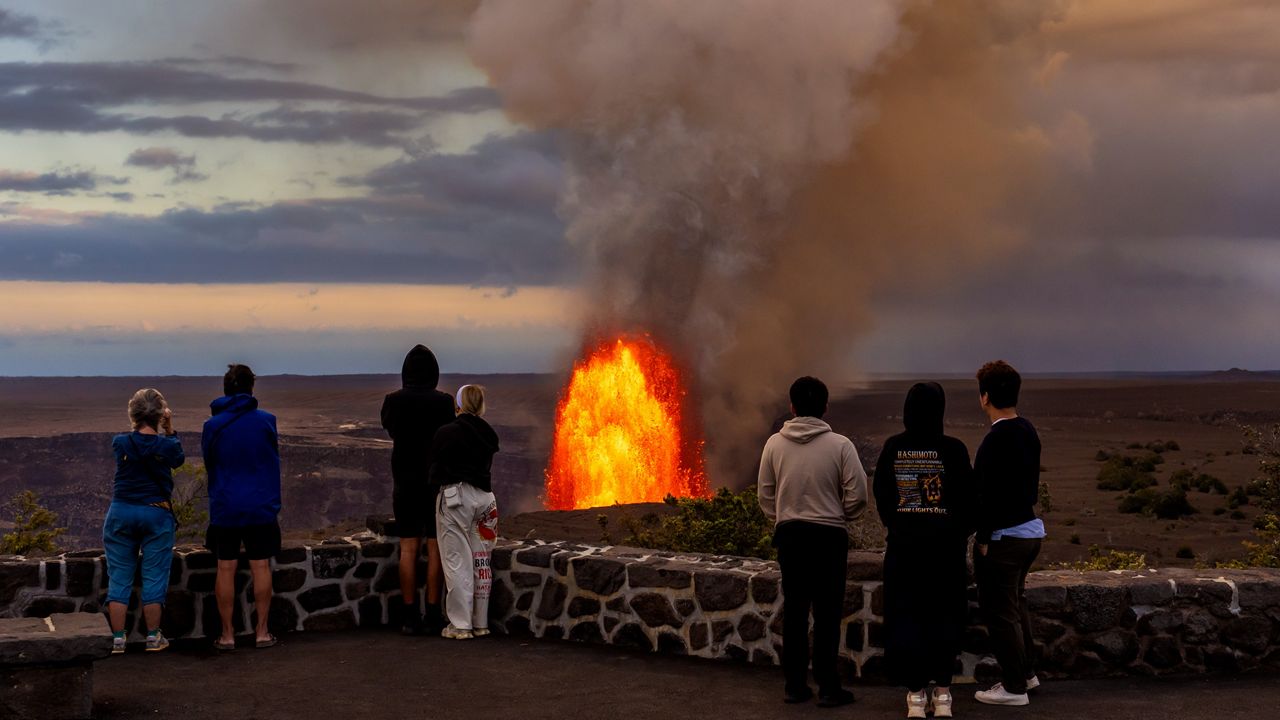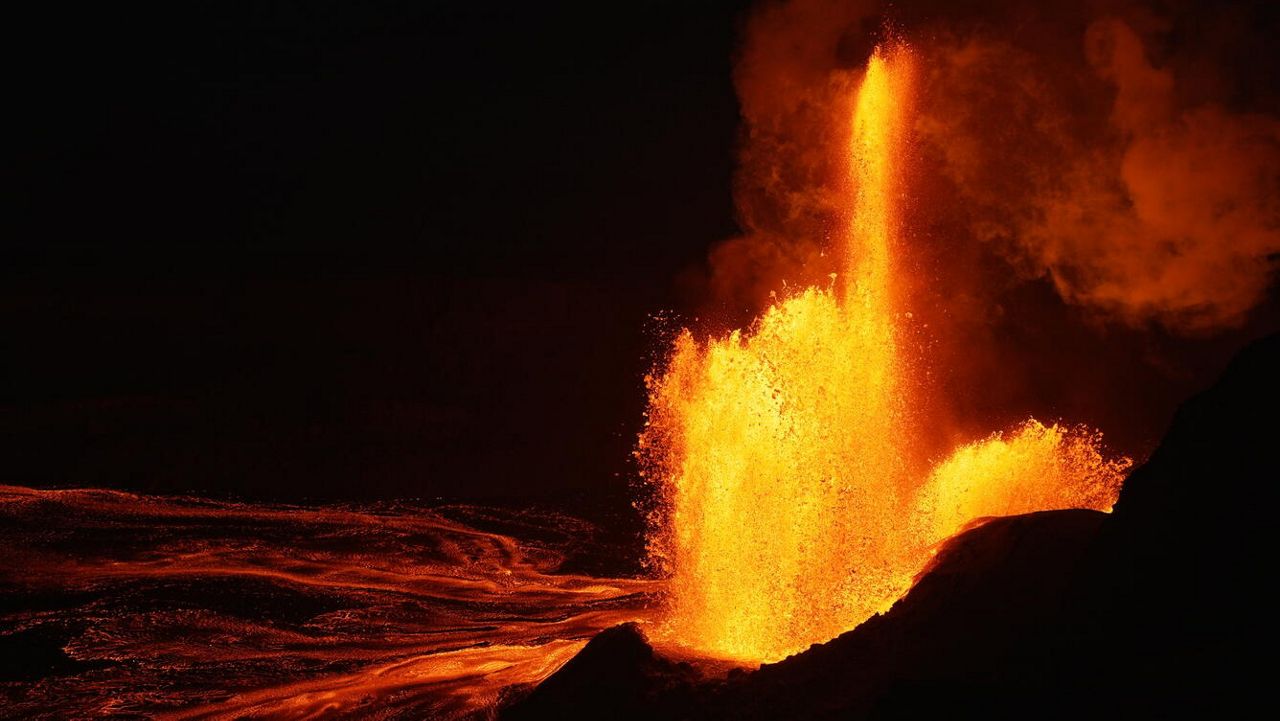Scientists at the Hawaiian Volcano Observatory say as of 9:02 a.m. on Sept. 17 the eruption that began at Kilauea summit a week ago has ended.
Based on visual and geophysical observations, they report that lava supply to the vents on the “downdropped block” of Kilauea’s summit caldera stopped on Saturday. Sulfur dioxide emissions have also decreased to near pre-eruption levels.
As such, the USGS HVO has lowered the Volcano Alert Level for ground-based hazards from Watch to Advisory and the Aviation Color Code from Orange to Yellow.
HVO field crews on Saturday morning reported lava was no longer flowing onto the Halemaumau Crater floor and was restricted to a ponded area north of the vents on the “downdropped block.”
At about 11:15 a.m. on Saturday, HVO crews observed lava spattering at the vents cease, and by about noon, the webcam showed stagnant ponded lava. Overnight webcam views showed “incandescence across the eruption area as lava erupted over the past week continuing to cool.”
Geophysical data support these visual observations as eruptive tremors in the summit area decreased over Sept. 15 and 16 and returned to pre-eruption levels by 5 p.m. HST on Sept. 16, according the HVO. During that period, mild inflation was recorded at summit tiltmeters and sulfur dioxide emissions decreased.
Scientists warn the potential for eruption activity at or near Kilauea summit still remains. HVO will continue to monitor Kilauea for signs of renewed activity.
Information on this recent eruption is available at the USGS website.
Sarah Yamanaka covers events, environmental and community news for Spectrum News Hawaii. She can be reached at sarah.yamanaka@charter.com.








